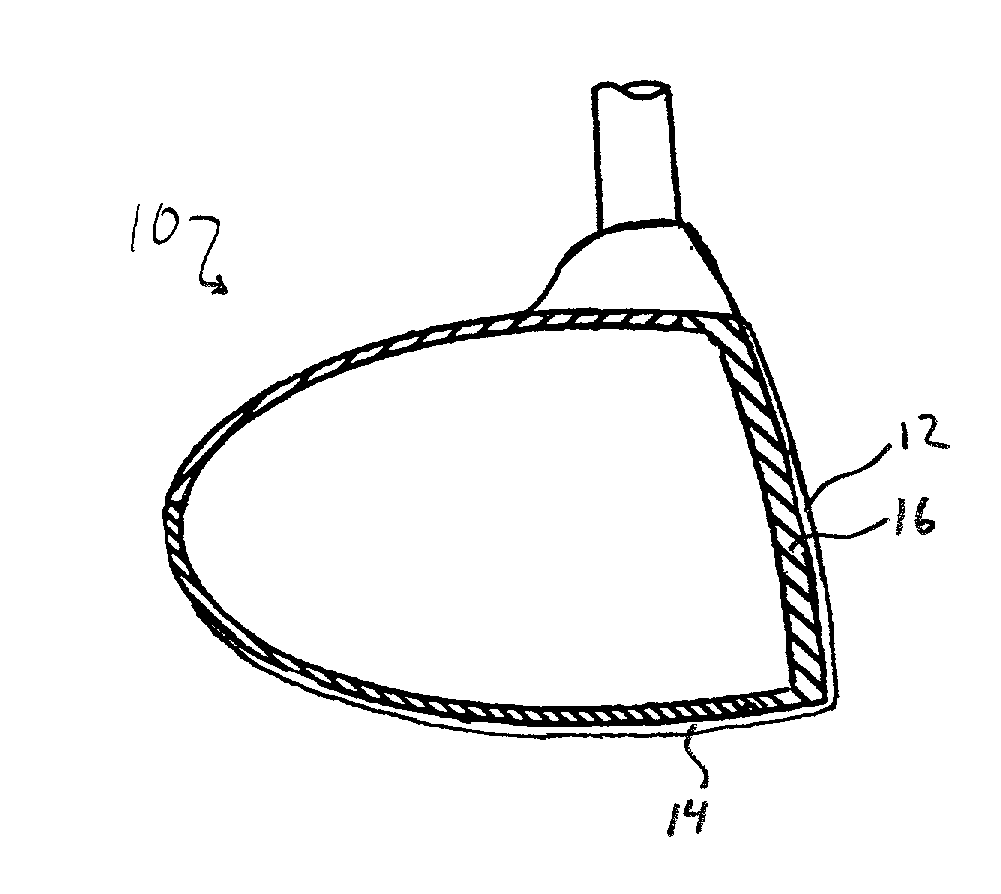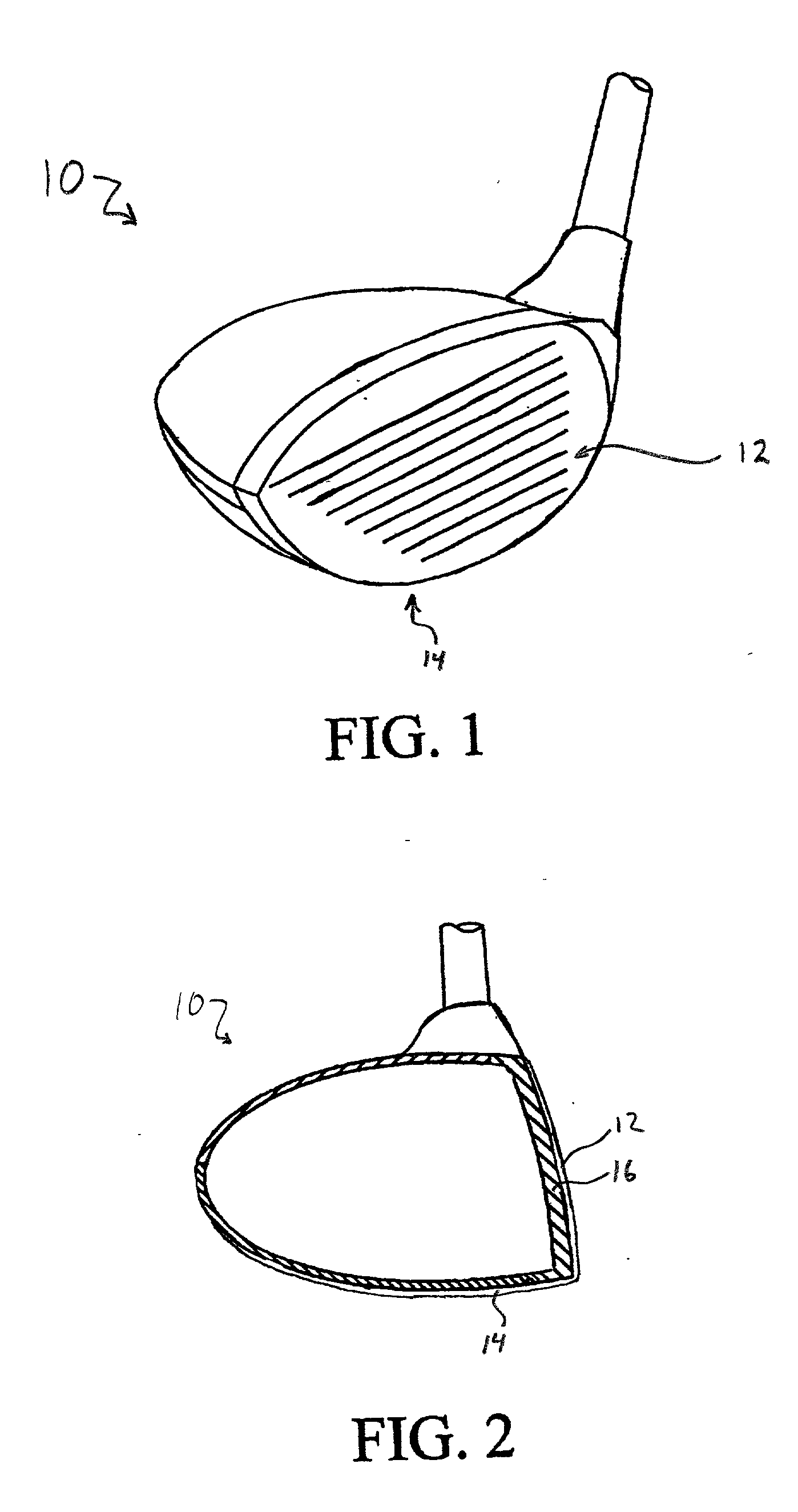Diamond-like carbon coated golf club head
a carbon coating and golf club technology, applied in golf clubs, sport apparatus, etc., can solve the problems of high frictional force between the hitting surface and the golf ball, increase the frictional force, and the hitting surface is generally undesirable, and achieves low frictional coefficient, low frictional coefficient, and low friction.
- Summary
- Abstract
- Description
- Claims
- Application Information
AI Technical Summary
Benefits of technology
Problems solved by technology
Method used
Image
Examples
Embodiment Construction
[0036] 50 titanium drivers were coated with dehydrogenated DLC using the cathodic arc method. The deposited amorphous or distorted tetrahedral diamond was applied at a thickness of about 3 micrometers. The clubs, having diamond-like carbon (DLC) coated heads, were used by many golfers. Most felt that their golf performance, in particular, their driving distance (due in part to lower degree of hook and slice) had noticeably improved when using diamond-like carbon (DLC) coated golf club heads.
[0037] While the invention has been described with reference to certain preferred embodiments, those skilled in the art will appreciate that various modifications, changes, omissions and substitutions can be made without departing from the spirit of the invention. It is intended, therefore, that the invention be limited only by the scope of the following claims.
PUM
| Property | Measurement | Unit |
|---|---|---|
| grain size | aaaaa | aaaaa |
| grain size | aaaaa | aaaaa |
| grain size | aaaaa | aaaaa |
Abstract
Description
Claims
Application Information
 Login to View More
Login to View More - R&D
- Intellectual Property
- Life Sciences
- Materials
- Tech Scout
- Unparalleled Data Quality
- Higher Quality Content
- 60% Fewer Hallucinations
Browse by: Latest US Patents, China's latest patents, Technical Efficacy Thesaurus, Application Domain, Technology Topic, Popular Technical Reports.
© 2025 PatSnap. All rights reserved.Legal|Privacy policy|Modern Slavery Act Transparency Statement|Sitemap|About US| Contact US: help@patsnap.com


